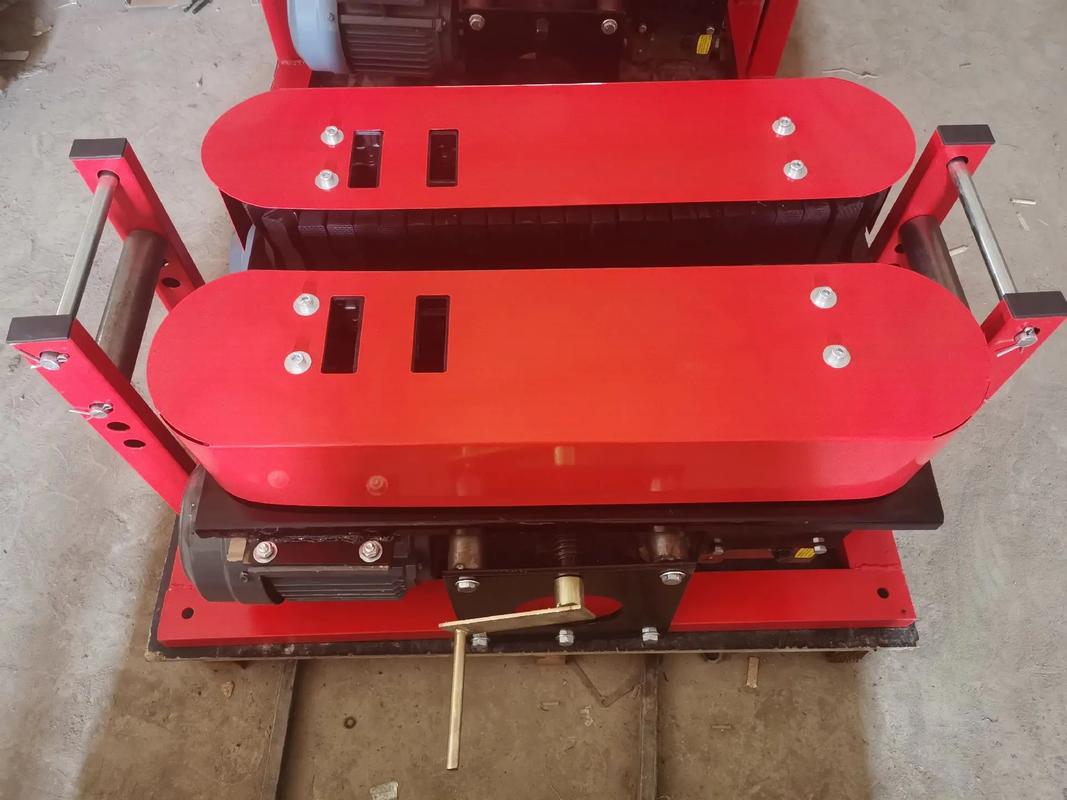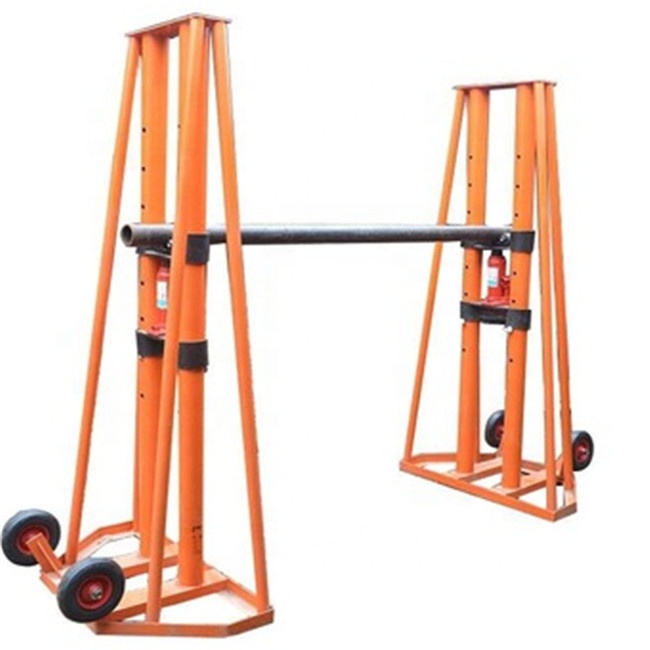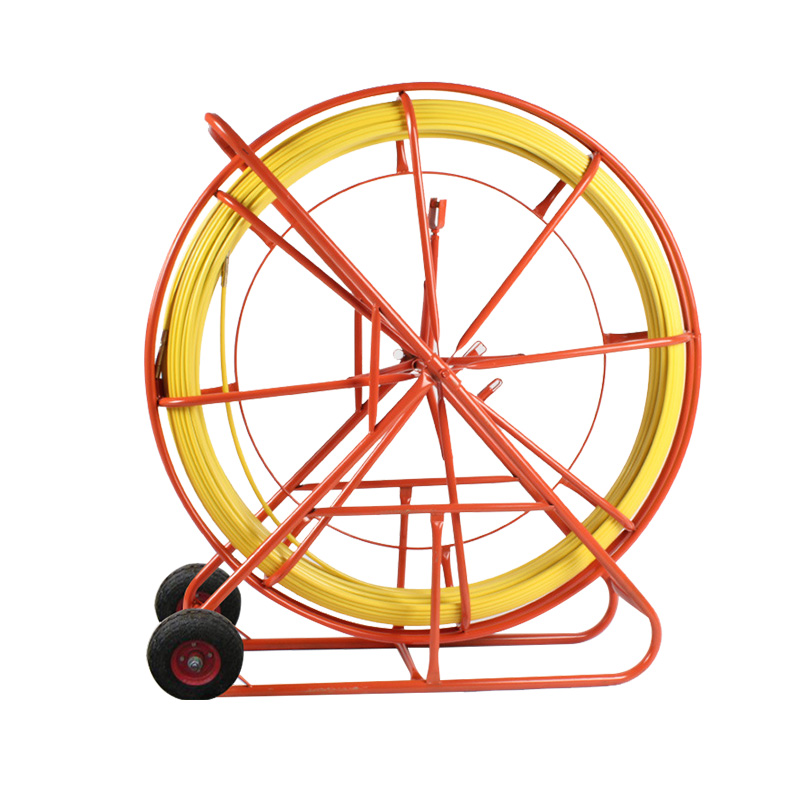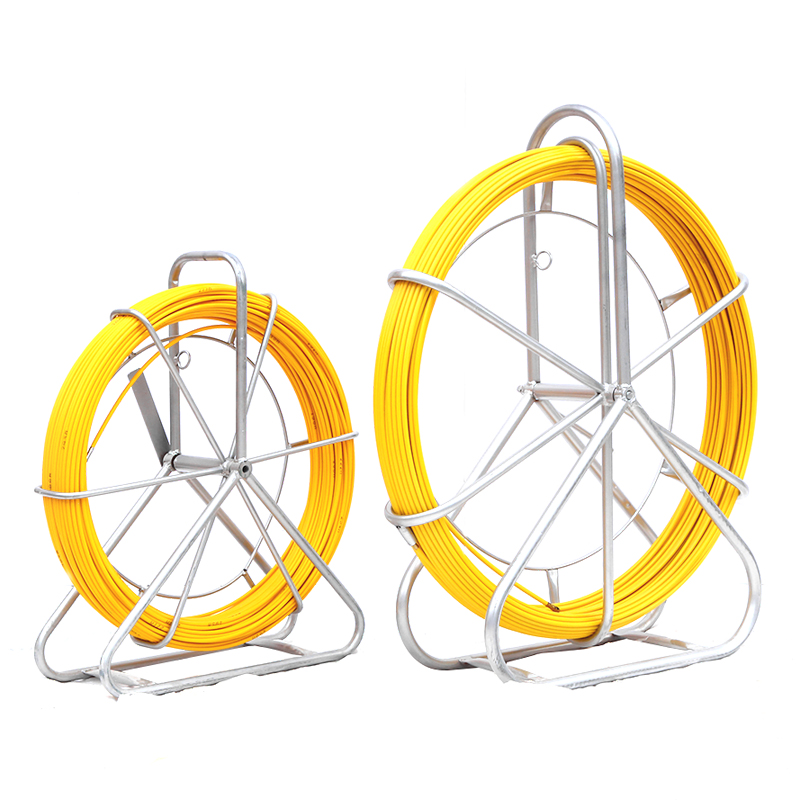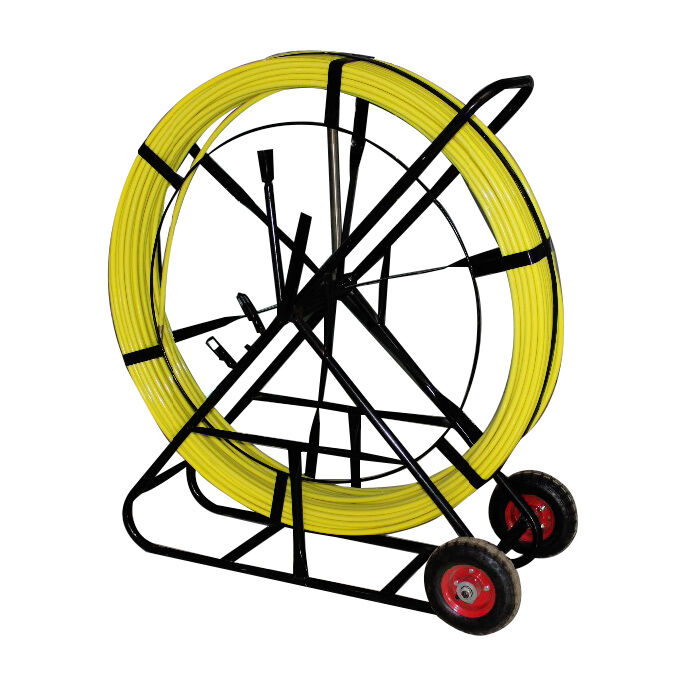

The Crawler Type Cable Conveyor is an innovative solution for efficiently transporting cables in challenging terrains and environments. Featuring a crawler-type design, it offers exceptional stability and maneuverability, making it suitable for various industries such as construction, mining, and telecommunications.
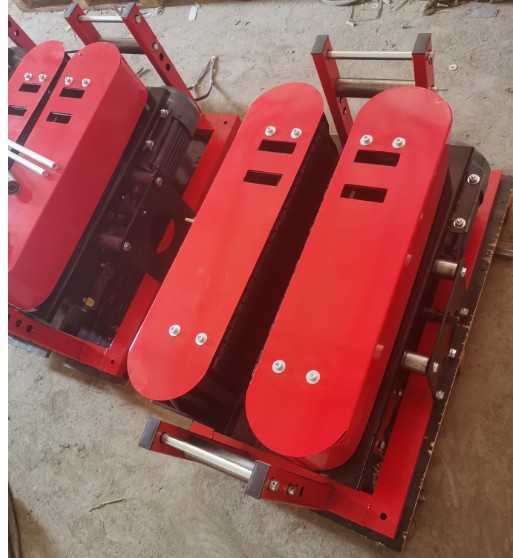
Cable Tractor Conveyor Instructions:
1. Ensure that the machine is positioned on a stable surface and firmly secured in place.
2. It is essential to ensure a secure and stable connection for the power cord (using a 330VAC three-phase four-wire system, with proper grounding of the machine shell) and implement precautions to avoid any leakage.
3. Adjust the rollers at the ends of the machine to the suitable height based on the cable diameter, allowing the cable to smoothly pass through the center of the track. Simultaneously, rotate the handle in a counterclockwise direction to loosen the elastic screw rod and position the rubber track correctly for the cable entry.
4. The distance between the conveyor and the cable should be around 15-30 meters for concentric cable and 25-50 meters for other machines, depending on the cable size. In slopes and turns, reduce the distance between machines and install pulley support and drive cables. The cable drum must be manually guided to rotate and unwind to ensure the cable is relaxed and prevent severe damage to the cup. To align the cable with the machine, pulleys should be positioned 1 meter before and after the machine, slightly elevated. When encountering a turn in the cable trench, the machine should be positioned on the straight section of the cable's turn.
Prior to the cable entering the conveyor, any lubricant (powder) and dirt stuck to the cable's surface should be removed.
5. Once the cable end passes 1.5 meters over the conveyor, start the machine and turn the screw clockwise with the hand crank to clamp the cable with the crawler and the conveyor runs. Adjust the clamping force as needed and visually check for any sliding between the crawler track and the cable.
6. If the conveying cable is excessively heavy or lengthy, a single machine will not suffice to meet the construction needs. Consequently, multiple cable conveyors must be employed in succession. When operating in series, all conveyors are aligned to move in the same direction and at the same speed.
7. If the machine unexpectedly halts while in operation, the initial step is to disconnect the power supply, power off the machine, inspect the machine and motor circuits for any malfunctions, and subsequently restart the machine once the fault has been resolved.
8. The cable conveyor is an auxiliary traction equipment and must not be overloaded. We have other cable laying tools for sale, click to view them.
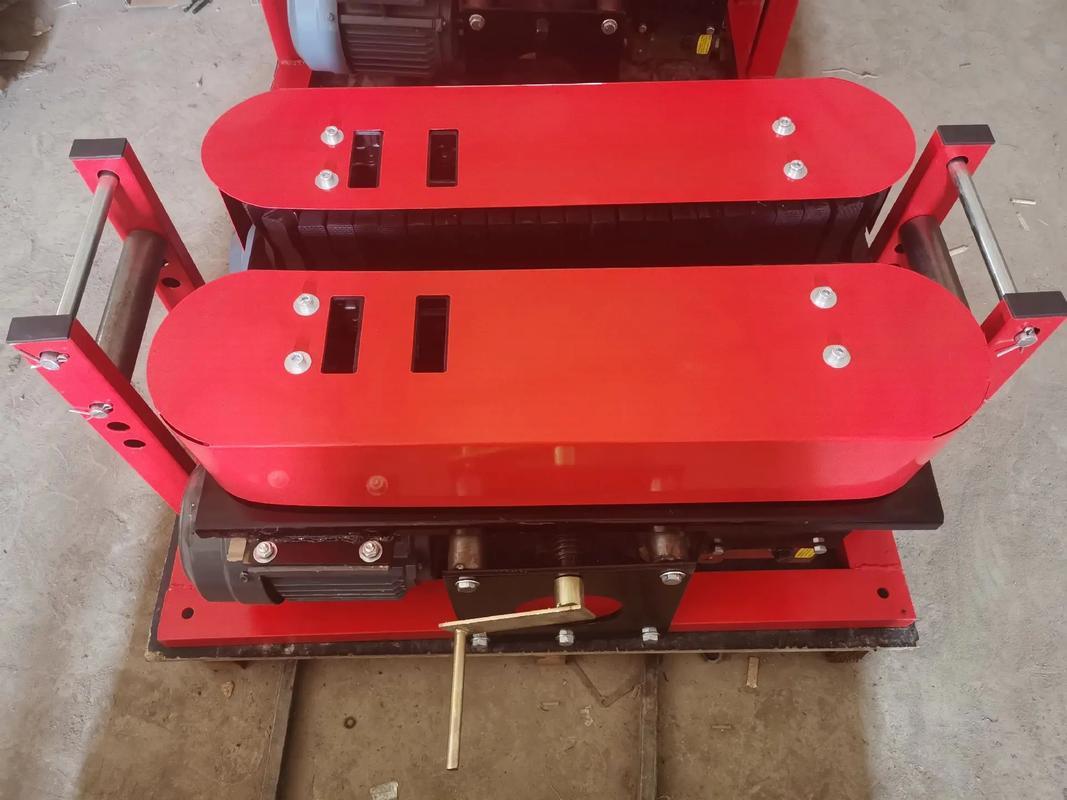
Crawler Type Cable Conveyor Specific instructions:
1. Depending on the size of the cable being transported, you should modify the height of the cable conveyor in front of the wheel to provide support for the cable. Make sure to loosen the hand screw as needed, adjust the height of the tug accordingly, and then securely tighten the hand screw.
2. Use the hand crank to loosen the elastic screw rod counterclockwise according to the cable size. This will allow the rubber track to be loosened for placing the cable.
3. Before utilizing the conveyor, it is essential to conduct a thorough inspection to ensure that the connecting bolts and nuts of each component are not loose. If any looseness is detected, tighten them accordingly. Verify if the lubricating grease on the open gear is properly applied, reapplying it if necessary. Check the lifting mechanism of the riding wheel, adjust the cable conveyor, secure the entire machine, and proceed to run the cable conveyor without any load for five minutes to assess the overall operational status.
4. For single machine use, secure the cable belt conveyor to the ground and adjust the height of the supporting wheel. Loosen the rubber track, insert the cable, use a wrench to turn the elastic screw rod clockwise to clamp the cable, start the motor, and begin transporting the cable.
5. Due to the heavy weight of large section cables, it is difficult to meet the construction requirements for single use. At this time, multiple cable conveyors should be used in series with the assistance of tractors.
- When the cable enters the first cable conveyor with the tractor's traction, stop the traction, clamp the cable between the rubber tracks, and then start both the tractor and cable conveyor simultaneously.
- Repeat the same process for the second cable conveyor when the cable reaches it.
- Stop the traction when the cable enters the third cable conveyor.
- Halt the traction once the cable reaches the third conveyor, secure the cable between the rubber tracks, and then initiate the traction machine along with the three cable conveyors.
- Repeat the aforementioned steps until the cable reaches the final cable conveyor. At this point, the entire line cable construction operation can commence.
- To ensure the synchronized operation of each machine, users must set up the corresponding synchronous power control cabinet based on the specific construction plan. The synchronous power control cabinet consists of a main control box and sub-control boxes. A single main control box can oversee ten sub-control boxes, with each sub-control box managing a cable conveyor. Each control box is equipped with ample power sockets for easy connection between the main control box, sub-control box, and cable conveyor. This control system is designed to prioritize safety, with stop switches on each sub-control box and the main control box enabling the complete line to halt operation, adhering to the safety principle of sub-control and total stop.
- Cable conveyor quantity configuration guidelines
For conveying cables with a diameter of 30-80 mm, the distance between conveyors should be 40-50 meters. For transmission cables with a diameter of 80-100 mm, the transmission interval should be 30-40 meters. For transmission cables with a diameter of 100-150 mm, the transmission interval should be 20-30 meters. Lastly, for transmission cables with a diameter of 150-180 mm, the transmission interval should be 10-15 meters.
Enquiry Now
We will contact you within 24 hours!
Recommended Products
Search from here
Get Free Quotes
Scan the QR code and add my WeChat friends

Wechat : amxingda
Scan the QR code and add my QQ friends

QQ : 561****05
